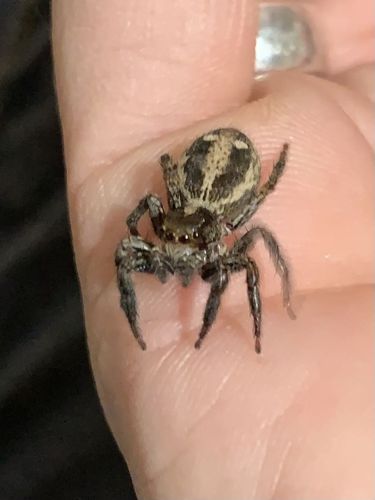Jumping Spider
Scientific Name: Phidippus audax (likely, based on the markings and robust appearance, though precise species identification without clearer detail is difficult)
Order & Family: Order: Araneae, Family: Salticidae
Size: Typically 3 to 15 mm (0.12 to 0.6 inches) in body length, depending on the species.

Natural Habitat
Very common and found in a wide variety of habitats, including gardens, forests, grasslands, and even inside homes. They prefer sunny areas and can be found on foliage, fences, walls, and tree trunks.
Diet & Feeding
Mainly feeds on other small insects and arthropods. They are ambush predators and will pounce on their prey.
Behavior Patterns
Jumping spiders are active hunters during the day, using their excellent vision to stalk and pounce on prey. They do not build webs for catching prey but may use silk for safety lines, to build small silk retreats for resting, molting, or laying eggs, and during courtship displays. Males often perform elaborate dances to attract females.
Risks & Benefits
Generally harmless to humans. While they can bite if threatened, their venom is not considered medically significant to humans, and bites are rare and usually cause only mild, localized discomfort. Benefits include natural pest control by preying on various insects in gardens and homes.
Identified on: 9/2/2025